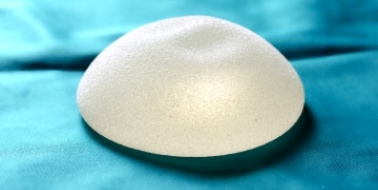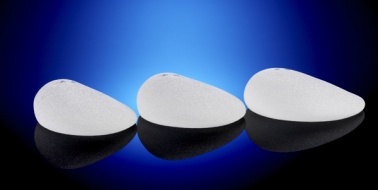Breast implant manufacturers have developed many different types of implants to suit the varying anatomical needs of patients. While the different types of implants have made it possible for plastic surgeons to achieve good results on all body types, it has made the breast augmentation process a bit more confusing for patients. In addition to deciding on an incision technique and placement approach, patients must also make a decision regarding the filler type, size, shape, texture, and profile of the breast implant.
While our Philadelphia plastic surgeons will advise you on the most appropriate implant type, your preferences and aesthetic goals will certainly guide us in choosing the implant that is right for your specific needs. Prior to coming into our office for your consultation, we invite you to read this overview of the different breast implants that are available so you can weigh your options and be better prepared for your pre-surgical appointment.
Saline vs. Silicone Implants
When it comes to breast implant fillers, patients have three choices: saline, silicone gel, and cohesive silicone gel. Silicone-filled implants are widely considered to be the most natural looking and feeling option, making them far more desirable to patients, especially those women that have little natural breast tissue to cover the implant (thin and small breasted women will experience the greatest benefit from silicone implants).
There are three notable drawbacks of silicone gel implants. First, because the silicone gel is a thicker consistency than the saline fluid, it is more difficult to detect a leakage; for this reason, women with silicone implants should regularly undergo MRIs to determine if the implants have ruptured. Second, silicone breast implants require a larger incision when placed in the breasts. This is because saline implants can be filled after they are placed in the breasts; conversely, silicone gel and cohesive gel implants are pre-filled. Finally, since silicone implants are pre-filled, there are some limitations as to the size of implants that can be placed through the areolar and transaxillary incisions.
The main differences between silicone and saline implants include:
- Incision size: With saline implants, the typical incision size is about three-centimeters in length. With silicone implants, the average incision size is about six centimeters.
- Incisional approach: Patients desiring large silicone breast implants may be best suited to the inframammary incisional approach, as there are some limits as to the size of silicone implant that can be placed through the areolar and armpit incisions.
- Feel: The filler material in saline implants is similar to that of water, while silicone implants contain a gel-like material that is thicker in consistency. The feel of the silicone filler material more closely mimics the feel of natural breast tissue.
- Appearance: Silicone gel implants look more natural than saline implants, particularly in small-breasted and small-framed women.
- Price: Silicone implants are more expensive than saline implants.
- Rupture: When saline implants deflate, the solution is safely absorbed by the body in a matter of hours, resulting in noticeable breast asymmetry. Silicone implant ruptures often go unnoticed because the filler material stays in place. For this reason, women should undergo routine MRIs, especially when the implants reach the end of their lifespan.
Sizing
Did you know that correction of implant size is the most common cosmetic reason for breast implant revision surgery? At our Philadelphia practice, we want to get it right the first time around. That is why we use silicone sizers to get an accurate assessment of a patient's desired size. Silicone sizers are a helpful tool; they allow our patients to "try on" breast implants before undergoing surgery. We have few, if any, patients who are unhappy with the size of their breasts after augmentation surgery.
Shape
Breast implants come in round and teardrop shapes. At our practice, we have found that many breast augmentation patients prefer the extra volume and cleavage that is created with round implants. The teardrop shape was developed to produce a more natural, sloping appearance to the breasts; this shape is most commonly placed in thin women with small amounts of natural tissue. However, the size and profile of round implants can also be adjusted to produce a more natural looking appearance, and accommodate the patient's goals and anatomy. Most frequently, we recommend round implants because they are associated with fewer post-surgical complications.
Texture
The textured, as opposed to a smooth, implant surface was designed to reduce the risk of capsular contracture. However, when implants are placed below the chest muscle, this benefit is negated. Further, textured implants are associated with a higher rupture and wrinkling rate. In the majority of cases, we recommend smooth-surfaced implants to our Philadelphia breast augmentation patients.
Profile
Breast implant profile, or projection, is a measurement of the forward distance from the outer wall of the implant to the chest wall, in relation to the width of the base of the implant. When a high profile implant, which has a narrower base width, is placed in a patient, it will create a more dramatic curve than a lower profile implant, which has a wider base width. A high profile implant will produce more fullness in the upper pole of the breast, while a low profile implant will fill out the lower and middle part of the breast. The choice of profile type will depend on your specific breast measurements and personal goals.
Philadelphia Breast Implants - Patient Consultations
Contact our Philadelphia practice to learn about breast implants and the options that are available to you.



